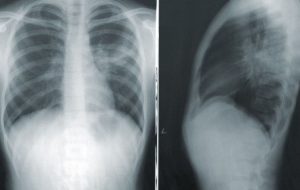Maintaining a healthy and safe workplace is essential for any business. There are many ways to ensure that your workplace is safe and healthy, from implementing proper safety procedures to providing employees with the resources they need to stay healthy. By taking steps to create a safe and healthy work environment, you can help reduce the risk of accidents and injuries and create a more productive and positive work environment for your employees.
Technology can play a crucial role in helping to achieve this goal. By using technology to improve communication and streamline processes, businesses can create a safer and more efficient workplace. It can also help to identify potential risks and hazards which would benefit everyone in the business place.
But how does technology help maintain a safe and healthy working environment? Here are a few examples.
1. They allow for remote work
In some cases, technology can allow employees to work remotely. The setup was proven effective when the pandemic hit the world. Employees were required to stay at home and continue their jobs. That’s when many people realized that working from home can benefit their work-life balance. This can also benefit businesses as it can reduce the need for office space and improve employee productivity. Additionally, working remotely can help employees avoid potential hazards, such as exposure to bad air quality or long commutes.
2. Monitor conditions
Technology can also be used to monitor conditions in the workplace. By installing cameras or using wearables, businesses can track employee movements and identify potential hazards. Additionally, businesses can use data analytics to identify trends that may indicate potential risks. By proactively addressing these risks, businesses can reduce the likelihood of employee illness and improve overall productivity.
3. Helps buildings to maintain good air quality
By using technology to monitor air conditions in the workplace, businesses can be sure that everyone in the workplace is inhaling quality air. For example, if a building has poor air quality, companies can use technology to improve ventilation or install air purifiers. They also have radon mitigation systems to keep the air clean and free of harmful contaminants.
4. Help manage employee health data
Technology can also help businesses manage employee health data and identify trends that may indicate potential health risks. By proactively addressing these risks, businesses can reduce the likelihood of employee illness and improve overall productivity. For example, if a company notices that many employees are calling in sick, they may investigate potential causes and take steps to mitigate the issue.
5. Improve communication
Another way that technology can help maintain a safe and healthy workplace is by improving communication. For example, if there is an emergency, businesses can use mass notification systems to send alerts to all employees quickly. Additionally, companies can use technology to create employee health and safety portals where employees can access information and resources.

6. They create a paperless environment
By moving to a paperless environment, businesses can reduce fire risk and improve organization. For example, companies can use electronic document management systems to store and track employee records. Additionally, companies can use digital signage to post safety information and reminders. You may not know how big our problem is with paper pollution. That’s why going paperless is one of the best things businesses can do to create a safe and healthy workplace. It’s an option that every company and business owner should opt-in to help save the environment too.
7. They provide security
Technology can also help businesses improve security in the workplace. For example, companies can use access control systems to restrict employee access to areas where hazards are present. You may be seeing them a lot in offices these days when you need an access card to open doors. Businesses can also use surveillance systems to monitor employee activity and deter potential theft or vandalism.
8. Automated safety procedures
Technology can be used to create systems that automate safety procedures. For example, businesses can use sensors to detect when hazardous materials are present and then take steps to mitigate the risk. Those simple smoke alarms can be a big help in the event of a fire and in detecting other potential hazards like carbon monoxide. Additionally, automated systems can help ensure that employees are following best practices.
Technology can play a vital role in helping businesses maintain a safe and healthy workplace. By using technology to monitor conditions, automate safety procedures, and manage employee health data, companies can create a safer environment for their employees and improve their bottom line. There’s nothing better than having peace of mind knowing that you can protect your employees.


















